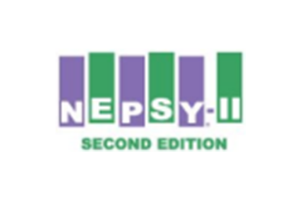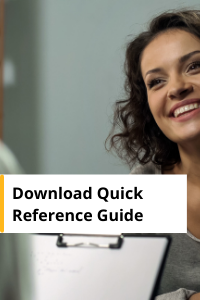Author:
Marit Korkman, Ph.D., Ursula Kirk, Ph.D., Sally Kemp, Ph.D.
Age Range:
3 through 16 years
RTI Tiers:
RTI Levels 2 and 3
Completion Time:
General Assessment: Preschool ages - 45 minutes; School ages - 1 hour. Diagnostic & Selective Assessment: Varies. Full Assessment: Preschool ages - 90 minutes; School ages - 2 to 3 hours
Forms:
Two Forms: Ages 3 through 4; Ages 5 through 16
Norms:
Nationally normed
Scores/Interpretation:
Standard (Scaled) Scores; Process Scores; Behavioral Observations
Publication Date:
2007
The only customizable measure of neurocognitive processes



The NEPSY–II is the only single measure that allows the clinician to create a tailored assessment across six domains, specific to a child’s (ages 3:0-16:11 years) situation in order to answer referral questions or diagnostic concerns. The results provide information relating to typical childhood disorders, which can lead to accurate diagnosis and intervention planning for success in school and at home.
What’s more, subtest selection and scoring are easier and faster than ever with the NEPSY-II Scoring Assistant and Assessment Planner. Based on the referral concern, the software guides you to the suggested subtests.
The results of NEPSY-II, when combined with quantifiable behavioral observations analysis during the assessment and observations analysis during the assessment and observations from home and school, can help clarify the nature of a child’s problems and provide a basis for developing appropriate intervention recommendations.
NEPSY-II can help lead to accurate diagnosis and intervention planning for success in school … and away from school!
No longer do you have to use various subtests and tasks from many tools. With the integrated NEPSY–II you can:
- Assess executive functioning
- Vary the number and variety of subtests according to the needs of the child
- Link results to educational difficulties
- Facilitate recommendations for mental health interventions
- Obtain a comprehensive view of quantitative and qualitative patterns of neuropsychological performance
You Choose the Level of Administration
You can use NEPSY-II for general, diagnostic, selective or full assessments: from a basic overview of a child’s neurological status to a full comprehensive neuropsychological evaluation. The administration time will naturally vary.
- General assessment: will take from 45 minutes for preschool ages to one hour for school-age children. Provides a brief evaluation across five domains (excludes Social Perception).
- Diagnostic and selective assessments: will vary according to subtests, familiarity with procedures, a child’s presenting problems, etc. Provides in-depth assessment of areas relevant to diagnostic categories or areas desired by the examiner.
- Full assessment: will take from 90 minutes for preschool ages to 2 to 3 hours for school-age children. Comprehensive evaluation of a child’s neuropsychological status with all age-appropriate subtests.

Features & Benefits
What’s new about NEPSY–II?
- Age range extended up through 16 years – Record Form formats for different age ranges
- Recommended diagnostic groupings of subtests for use with clinical populations
- Shortened administration time due to increased flexibility
- Domain coverage increased from five to six – addition of Social Perception
- Tower replaced by three new measures of Executive Functioning: Inhibition, Clocks, and Animal Sorting
- New measures of visuospatial processing: Geometric Puzzles, Picture Puzzles
- New measures of memory and learning – particularly in spatial memory: Memory for Designs and Word List Interference
- NEPSY-II Scoring Assistant and Assessment Planner for pre-/post- administration assistance
- Case studies to enhance interpretation
Improvements to original NEPSY
- Replacement of domain scores with more clinically useful subtest scores
- Improved psychometric properties – ceilings and floors, reliability, validity
- Improved clinical sensitivity
- Improved construct validity with increased correlation studies with related or commonly used measures
- Enhanced process scores within subtests
- Standardized on a single, well-stratified sample
- Valid Norms regardless of order of subtest administration
- Behavioral observation profiles
- Sensitive to brain dysfunction as related to academic disorders
- Examine relations to multiple assessments, including the DAS–II and WISC–IV
Each NEPSY-II kit contains
- Administration Manual
- Clinical and Interpretive Manual
- Stimulus Book 1
- Stimulus Book 2
- Record Forms:
- Ages 3-4 (pkg 25)
- Ages 5-16 (pkg 25)
- Response Booklets:
- Ages 3-4 (pkg 25)
- Ages 5-16 (pkg 25)
- Memory for Designs Card Set – 22 cards
- Memory for Names Card Set – 8 cards
- Animal Sorting Card Set – 8 cards
- Memory Grid
- Scoring Template, Design Copying
- Red Blocks Set – 12 blocks
- Black pencil in box
- Training CD (included in kit): includes downloadable audio files for audio subtests: Auditory Attention and Response Set and Repetition of Nonsense Words
Areas of Assessment
Now you can assess across six domains …
- Executive Functioning/Attention
- Language
- Memory and Learning
- Sensorimotor Functioning
- Visuospatial Processing
- Social Perception – NEW!
Choose from among 32 subtests (4 additional delayed memory tasks) for the precise application you need…
Click Here to View Subtests Included in Reference Batteries – Table 2.2
Research Studies
Improved Clinical Sensitivity
- Test-Retest
- NEPSY–NEPSY-II
Clinical studies include:
- ADHD
- Reading Disorder
- Language Disorder
- Autistic Disorder
- Asperger’s Disorder
- Traumatic Brain Injury
- Deaf and Hard of Hearing
- Mathematics Disorder
- Emotionally Disturbed
- Mild Intellectual Disability
Validity Studies:
- WISC-IV
- DAS-II
- WIAT-II
- CMS
- D-KEFS
- Devereux Scales of Mental Disorders
- ABAS-II
- Brown ADD Scales
- WNV
- Bracken Basic Concept Scale: Expressive
- Bracken Basic Concept Scale: Receptive – Third Edition
- Childrens Communication Checklist–2
Scores For Valuable Information
The scores and information you can obtain through NEPSY-II can go from standard or scaled scores, to supplemental scores, and Quantitative Behavioral Observations
Scores:
- Standard scaled) Scores
- Process Scores
- Behavioral Observations presented as Cumulative Percentages or Base Rates
- Contrast/Compare scores
NEPSY-II Scoring Assistant & Assessment Planner
The unique, optional decision making and scoring software can be used before and after the test administration. Based on the specific child and the referral/clinical questions, the “assessment planner” can suggest specific subtests for administration to enhance clinical utility and minimize testing time. It features electronic decision trees that take the guesswork out of deciding which subtests to give for a specific client situation. After administration, as a “scoring assistant,” it simplifies and shortens the scoring process and allows greater evaluation of strengths and weaknesses.
See how the NEPSY-II Scoring Assistant and Assessment Planner can save you time by viewing these sample reports.
Note: If you are using Version 1.0 of the NEPSY-II Scoring Assistant and Assessment Planner, click here for important updates.
Sample Reports
See how the NEPSY-II Scoring Assistant and Assessment Planner can save you time by viewing these sample reports:
Peruse through these additional product resources:
To help familiarize yourself with your NEPSY-II, we have included a comprehensive training CD in your kit that walks you through each subtest. You will see how to administer, score, and interpret the results of each subtest.
Here’s a sample of what you will see on the training CD:
Scoring Assistant and Assessment Planner:
- PsychCorp Center Platform
- Assessment Planner
- Scoring Assistant
- Clinician Report
Subtests:
- Affect Recognition
- Theory of Mind
- Geometric Puzzles
- Inhibition
- Clocks
If you need additional training, you may contact your regional Clinical Consultant to see when a session is scheduled in your area.
Questions
Frequently asked questions follow. Click on a question to see the response.
Test Materials
-
In the Age 5–16 Record Form, the grid on Picture Puzzles Item 8 is missing the far right column, how do I score this item?
-
I am having difficulty getting the cards out of the box. Can I get a bigger box?
-
I can’t find the audio files I need for Auditory Attention and Response Set.
-
I just got my NEPSY–II kit and am overwhelmed by the amount of administration I have to learn. What is the best way to learn the NEPSY–II?
Test Framework and Revisions
-
Why did you eliminate domain scores?
-
How do I determine which subtests to administer?
-
Why was the Tower subtest dropped?
General Administration and Scoring
-
On Narrative Memory, the NM Free Recall Total Score shows a maximum of half the points available for each age. Is this right?
-
How do I plan administration order for my battery?
-
On Theory of Mind and Geometric Puzzles, scores change from percentile ranks to scaled scores across ages. Why?
-
The use of digital clocks has greatly increased over the years. If I am testing a child who uses digital clocks, can I give Clocks?
Clinical and Special Group Performance
Subtest Administration and Scoring
-
What do I do if the child rotates a design during Memory for Designs or Memory for Designs Delayed?
-
I am not sure what to record for the sorts on Animal Sorting? Is a sort only four cards, or are there 8 cards per sort?
-
Is colorblindness a factor in performance on any subtest?
Benefits of NEPSY-II on Q-interactive
- Create custom batteries by combining NEPSY-II subtests with other tests such as the WISC-V.
- Engage children by displaying stimuli on the iPad.
- Automatically score items based on grid placement on Memory for Designs, to streamline administration.
- Obtain scaled scores immediately after finishing a subtest, to increase speed and accuracy.









